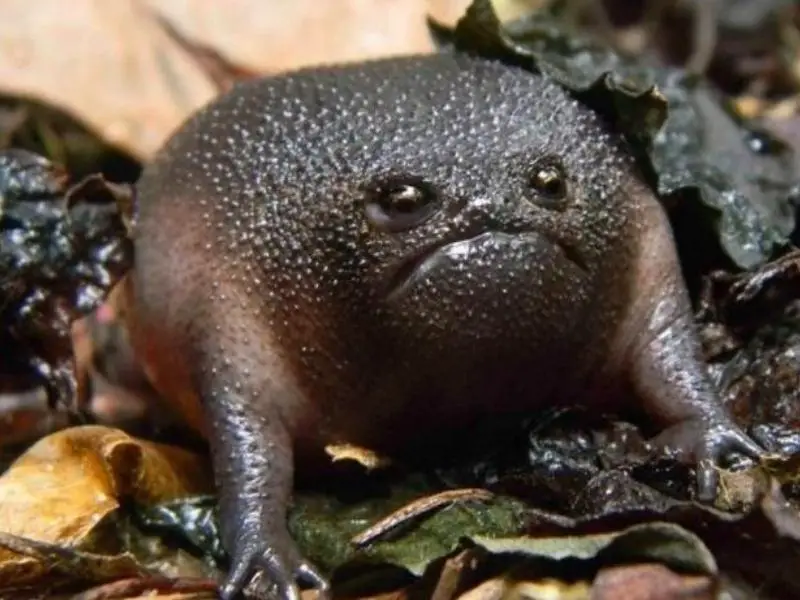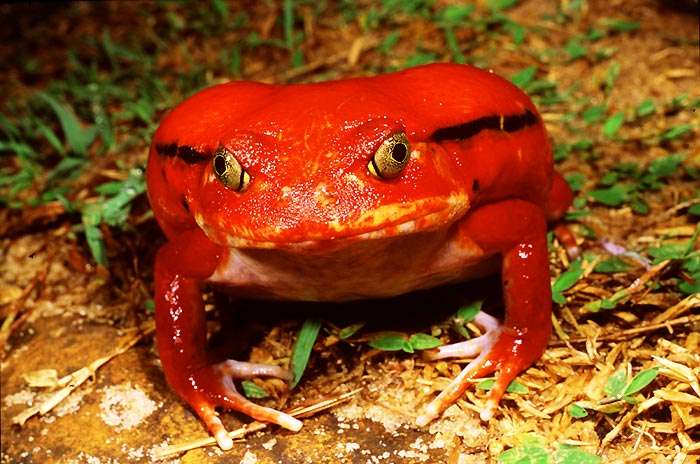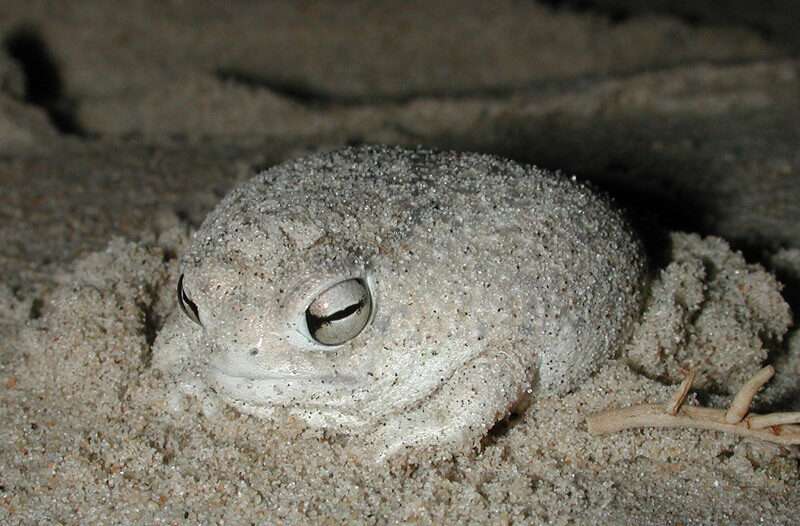
Breviceps adspersus is a species of frog in the Brevicipitidae family. It is also referred to as the common rain frog. It can be found in Southern Africa in Eswatini, Namibia, Botswana, Zambia, Zimbabwe, South Africa, Angola, Democratic Republic of the Congo, Namibia, and Namibia.
Description
After a downpour, generally at night, the common rain frog emerges to feed and breed. It spends its whole life underground. It has a flattened face and a thick, spherical body. This species has rows of lighter yellow orange patterns with darker margins along its light or dark brown body. It also possesses the small, sturdy limbs that the majority of toads and frogs that burrow have. Additionally, females are substantially bigger than males. Rows of lighter yellowish or orange patches can be seen on either side of the vertebral column as well as on the sides of the body, which has a light to dark brown background colour.
Along with a thin, light vertebral stripe and a light line stretching from heel to heel, dark speckles and patches can occasionally be seen. From the eye to the armpit, a wide black line is visible. The ventral surface is smooth and typically unmarked, the dorsal surface might be grainy or smooth, and the tympanum is not visible. Males might have either a completely black throat or a throat that is mottled and may be split by a black stripe, whereas all females have a mottled throat. The basal subarticular tubercles are solitary, and the palmar tubercles are moderately to well developed. The length difference between the inner and outer toes is not particularly noticeable.

Habitat
South Africa, Swaziland, Mozambique, Botswana, and Namibia are all home to this frog. Sand-based woodlands with open and closed edges are where B. adspersus typically breeds. It is absent from the upper slopes and crests of the mountains in South Africa, but it is present along the hot, dry foothills of the northeastern escarpment. Usually found in dry bushveld, it has a northern distribution in South Africa.
Reproduction
The couple is trapped together as they dig backwards through the ground till they come to a damp area. The female deposits her eggs when she finds an appropriate location. Instead of developing into tadpoles, the eggs hatch into froglets. They range in length from 1.5 inches to 2.4 inches (3 to 6 centimeters). Southeast Africa’s temperate woods and open grasslands are home to the common rain frog. They are a species that lives on land. Only in the rainy season do these frogs reproduce.
Keeping as Pet
The common rain frog, Breviceps adspersus, is not thought to be a particularly amiable species in its natural environment. The majority of the common rain frog’s life is spent underground; it only emerges to mate and eat. We can scarcely refer to bushveld rain frogs as pets, despite the fact that certain people may be attracted to their angry countenance and robust bulk. They demand a dry climate and have a tendency to burrow. They also release a harmful toxin and expand at the least threat, which is hardly entertaining for pet owners. Despite the fact that caring for a bushveld rain frog should be fairly simple, there is no scientific data to support the idea that it would make a decent pet.
Diet
The common rain frog consumes termites and insects. Frequently, infants consume caterpillars. Dapping is the term for the adult’s initial head-smacking of the bug. The insect is then found. They locate the insect and then capture it with their clingy tongues.
Table





